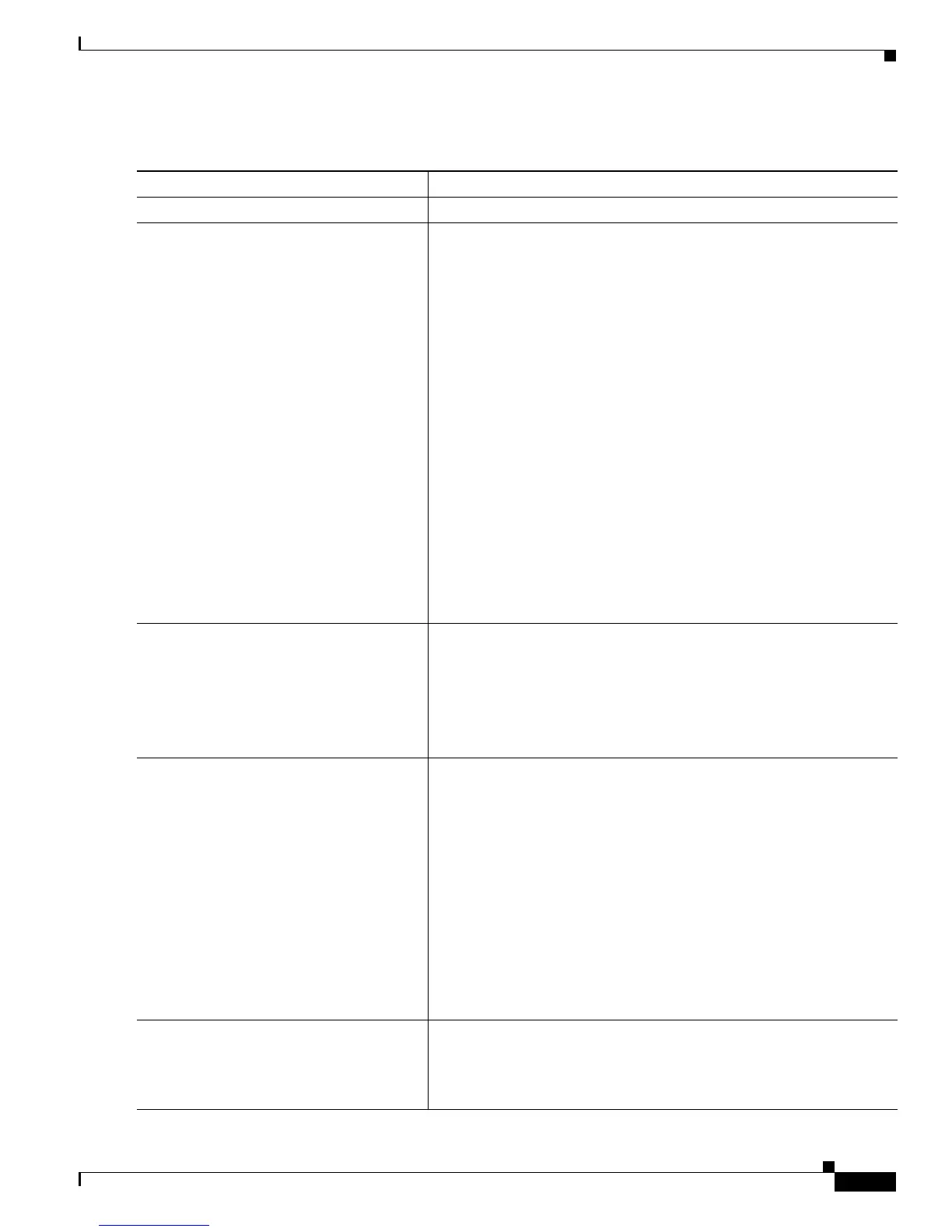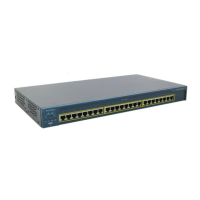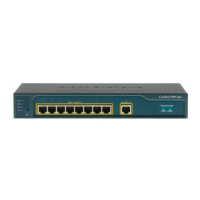13-19
Catalyst 2950 Desktop Switch Software Configuration Guide
78-11380-03
Chapter 13 Configuring QoS
Configuring QoS
Beginning in privileged EXEC mode, follow these steps to create a policy map:
Command Purpose
Step 1
configure terminal Enter global configuration mode.
Step 2
access-list access-list-number {deny |
permit}{source source-wildcard | host
source | any}
or
access-list access-list-number
{deny | permit | remark} protocol
{source source-wildcard | host source
|
any}[operator port]{destination
destination-wildcard | host destination
|
any} [operator port]
or
mac access-list extended name
(deny | permit} {any | host source MAC
address}{any | host destination MAC
address}[aarp | amber | dec-spanning |
decnet-iv | diagnostic | dsm | etype-6000 |
etype-8042 | lat | lavc-sca | mop-console |
mop-dump | msdos | mumps | netbios |
vines-echo |vines-ip | xns-idp]
Create an IP standard or extended ACL for IP traffic or a Layer 2 MAC
ACL for non-IP traffic, repeating the command as many times as
necessary.
For more information, see the “Classifying Traffic by Using ACLs”
section on page 13-14.
Note Deny statements are not supported for QoS ACLS. See the
“Classification Based on QoS ACLs” sectiononpage13-5for
more details.
For more information on this command, see the “CreatingNamed MAC
Extended ACLs” sectiononpage12-20.
Step 3
policy-map policy-map-name Create a policy map by entering the policy map name, and enter
policy-map configuration mode.
By default, no policy maps are defined.
The default behavior of a policy map is to set the DSCP to 0 if the
packet is an IP packet and to set the CoS to 0 if the packet is tagged. No
policing is performed.
Step 4
class class-map-name [access-group
acl-index-or-name
]
Define a traffic classification, and enter policy-map class configuration
mode.
By default, no policy map class maps are defined.
If a traffic class has already been defined by using the class-map global
configuration command, specify its name for
class-map-name in this
command.
For
access-group acl-index-or-name,specifythe number or name of the
ACL created in Step 2.
Note In a policy map, the class named class-default is not supported.
The switch does not filter traffic based on the policy map
defined by the class class-default policy-map configuration
command.
Step 5
set {ip dscp new-dscp} Classify IP traffic by setting a new value in the packet.
For ip dscp new-dscp,enteranewDSCPvaluetobeassignedtothe
classified traffic. The supported DSCP values are 0, 8, 10, 16, 18, 24,
26, 32, 34, 40, 46, 48, and 56.

